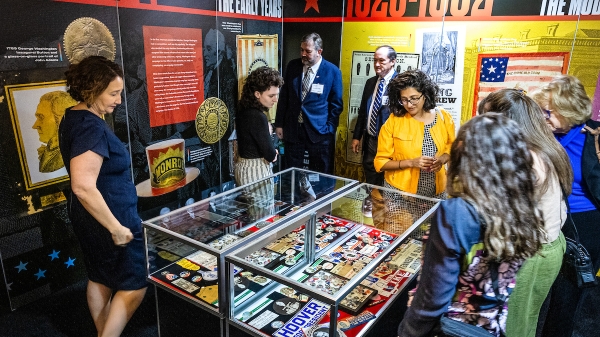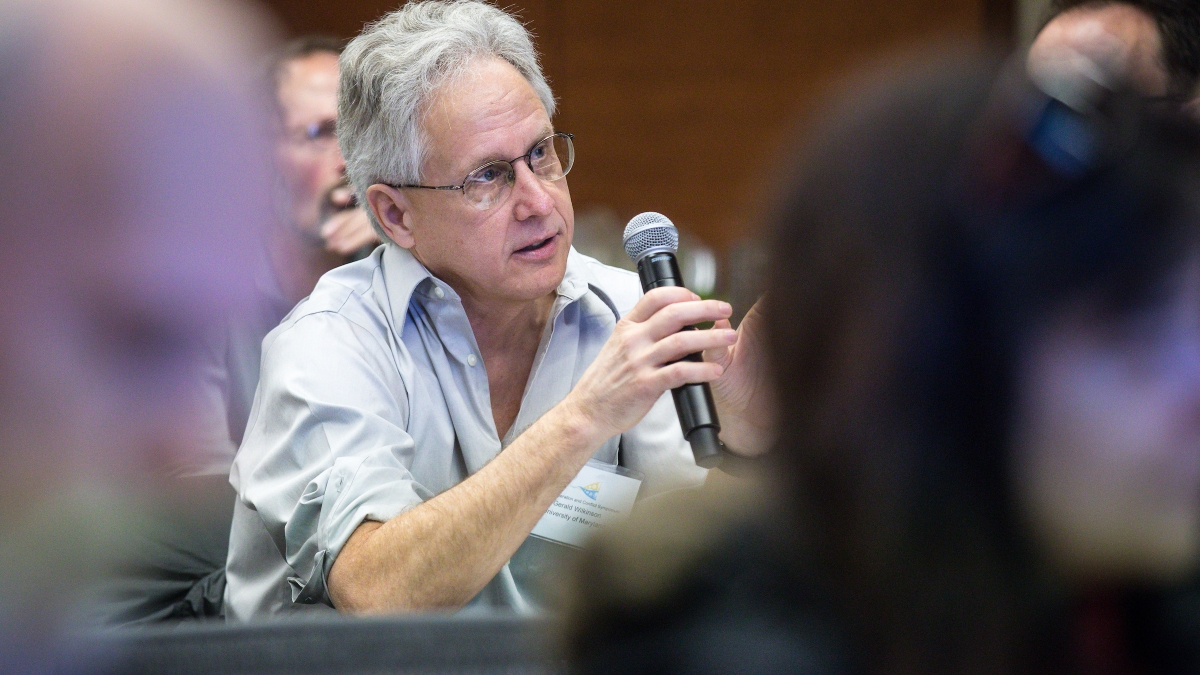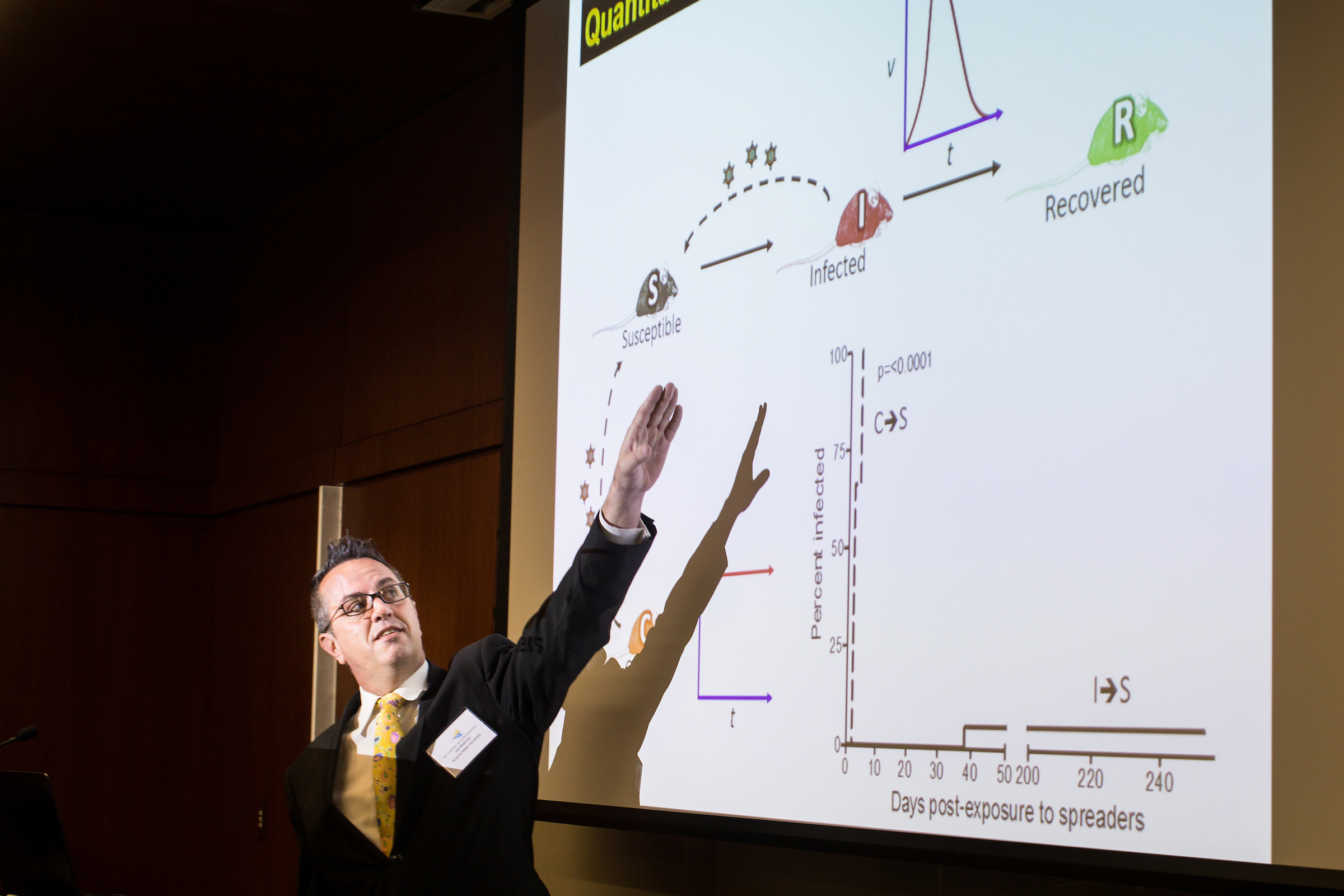The guy at work who contributes squat to a team project. The one who develops alligator arms every time the check arrives. The people you’ve had for dinner 20 times who always show up empty-handed.
Does it make you feel any better that ants, bees and wasps suffer from similar company?
Arizona State University’s first Cooperation and Conflict Symposium was held Thursday, bringing scholars from around campus and the world to discuss “Solving the problem of cheating in large-scale cooperative systems.”
The symposium’s scientists peered through the lens of different disciplines to see how the problem of cheating is addressed, and how cheating is detected, controlled and eliminated.
The event was the brainchild of Athena Aktipis, an assistant professor in the Department of Psychology, and Michael Hechter, a Foundation Professor in the School of Politics and Global Studies. The idea for the symposium began when Aktipis and Hechter started talking about how if you look at how lots of different social organizations work — everything from groups of humans to groups of cells interacting — there are some principles and ideas that apply across all these systems.
“All of these systems have in common that social interactions are happening among the individuals that make them up,” Aktipis said. “We tend to think of social interactions as something that humans do, but it’s actually something that happens across lots of different scales of life. … Cells also have social interaction. They send signals, they respond to signals, they change their behavior and what they’re expressing based on inputs from each other. So sociality is everywhere.”
And so is cheating and the risk of being exploited. That tension exists across all systems, whether human, cell or animal.
“So the idea for the symposium was to see if we could learn about how cheating is limited by looking across lots of systems,” Aktipis said.
ASU School of Life Sciences assistant professor Joe Blattman explains his quantitative analysis of viruses and their roles as cheaters or parasites at the ASU Cooperation and Conflict Symposium on Thursday. Twenty speakers from the U.S. and Europe spoke to around 50 people and a live-streaming audience about solving the problem of cheating in large-scale cooperative systems. Photo by Charlie Leight/ASU Now
Speakers came from across a wide array of disciplines, including a psychologist, sociologists, political scientists, anthropologists, immunologists, an archaeologist and an emergency medical doctor.
“We’re all over the map in terms of disciplines, but we’re all focusing on the same problem, which is how to get large-scale cooperation to be viable across multiple systems and how to limit cheating,” Aktipis said.
Are there general principles underlying cooperation?
When you go from small-scale cooperation to large-scale cooperation, cheating increases.
Vampire bats, social insects and people living pastoral lifestyles all share in times of need.
“It doesn’t always work perfectly,” Aktipis said. Cancer, for example, is multicellular cheating; it avoids cell death, monopolizes resources and shrinks the labor pool.
“What this means is you need cheater-detection systems in cellular societies,” she said.
Multicellular bodies detect cheating with an alarm system. At the cellular level, it monitors things like DNA damage. Neighborhood monitoring tracks cell adhesion and architecture. System-wide surveillance eyeballs regions with abnormal proliferation, resource use and waste production.
“As we look at one system and compare it to another … what are the general principles?” Aktipis asked.
Lee Cronk, an anthropology professor at Rutgers University, discussed coordination strategies. Walking up and down a sidewalk without bumping into anyone is a coordination strategy.
Two things interfere with cooperation, according to Cronk: free riders and problems where no one can benefit from cheating. The classic example of the latter is the prisoner’s dilemma, a game that shows why two completely "rational" individuals might not cooperate, even if it appears that it is in their best interests to do so.
“If you can find a way to get both parties to understand,” that is the best coordination strategy, Cronk said. Coordination can happen on large scales, he said. He cited international trade as an example. “It’s happening on a planet-wide scale,” he said.
But does it eliminate cheating? No. Swindlers, gamblers and others will always cheat.
Oliver Scott Curry, an anthropologist from Oxford, discussed “Bastards, Deviants, Rebels and Scumbags: Other types of cooperation and defection.”
“The main point I want to make this morning is that there are many different types of cooperation,” Scott Curry said. “There are also many types of bad guys.”
The good news is humans are adept at detecting bastards and deviants. These are ancient problems, not new problems. One way to solve cheating is by conditional cooperation, colloquially known as “tit for tat.”
“Life is full of these types of problems,” Scott Curry said.
Regardless of field, the same fundamental problems arise that could benefit from interdisciplinary collaboration.
“Things like cells interacting are going to have different mechanisms compared to how humans interact,” Aktipis said. “But some of the fundamental interactions can be parallel, which means there’s an opportunity to learn from each other, to gain insight into the work each of us is doing. When we start getting synergies in terms of understating the fundamental architecture of how these systems work, each discipline is much more empowered to make an impact because they’re leveraging the strengths from other disciplines as well.”
Written by Emma Greguska and Scott Seckel/ASU Now
Top photo: University of Maryland biology professor Gerald Wilkinson asks a question to ASU's Joe Blattman following his talk about viruses and their roles as cheaters or parasites, at the ASU Cooperation and Conflict Symposium on Thursday. Photo by Charlie Leight/ASU Now
More Law, journalism and politics

Opportunities and risks of AI in the court system
“Science and innovation have always been an important part of ASU Law,” said Stacy Leeds, dean of Arizona State University’s Sandra Day O’Connor College of Law. “So when Stanford University Law…

Law and addiction: How new science is impacting the justice system
For years, people who struggle with drug addiction have often been considered weak or in need of incarceration by the general public and legal community.But with recent scientific discoveries about…

Exhibit uses rare memorabilia to illustrate evolution of US presidential campaigns
After one of the most contentious elections in history, a new museum exhibit offers a historical perspective on the centuries-old American process.“We The People! Electing the American President” had…

